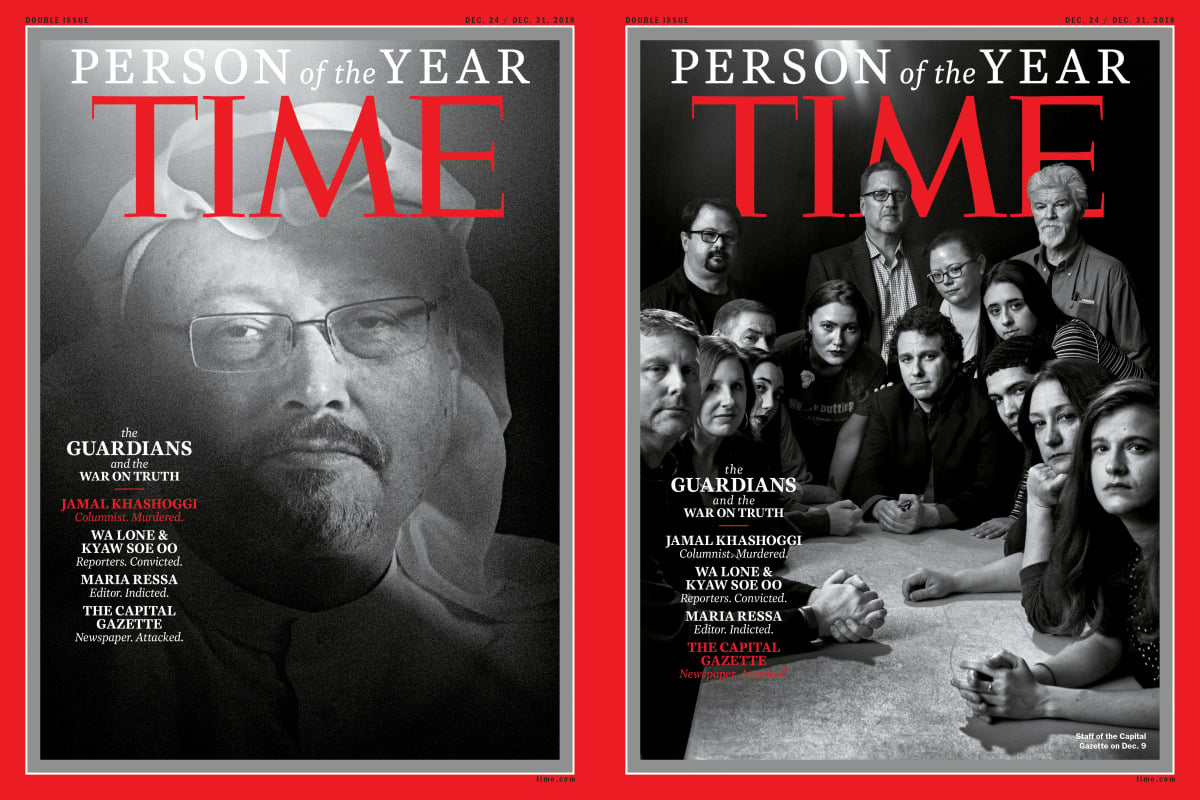
-With AAP.
1. Journalists honoured as Time’s 2018 Person of the Year.
Time magazine has named four journalists and a newspaper as its 2018 Person of the Year for what it says is standing up for the truth in the face of persecution and violence.
The group, which Time called “the guardians”, consists of slain Saudi journalist Jamal Khashoggi; the Capital Gazette in Annapolis, Maryland, where five people were shot to death at the newspaper’s offices in June; Philippine journalist Maria Ressa, who has been arrested; and Reuters journalists Wa Lone and Kyaw Soe Oo, who have been detained in Myanmar for nearly a year.
“They are representative of a broader fight by countless others around the world – as of December 10, at least 52 journalists have been murdered in 2018 – who risk all to tell the story of our time,” editor-in-chief Edward Felsenthal wrote in an essay on Tuesday.
Time selected them “for taking great risks in pursuit of greater truths, for the imperfect but essential quest for facts that are central to civil discourse, for speaking up and speaking out”.
Khashoggi was killed two months ago when The Washington Post columnist, who had lived in the US, visited Saudi Arabia’s consulate in Turkey for paperwork so he could get married. He had been critical of the Saudi regime.
Reesa is an award-winning Philippine journalist who, along with the online news service she heads, has been accused of tax evasion. Her website has been critical of the government of Philippines President Rodrigo Duterte, and she claims the charges are politically motivated.

Top Comments
1. No doubt we'll get a twitter rant about this from the short fingered vulgarian.
5. Of course the answer if another tax. As if Australian's aren't taxed enough as it is. Not to mention making a complicated system even more complicated. At the moment there's 16 different excise categories and two different taxation systems, depending on alcohol type, concentration, commercial use, and container size.